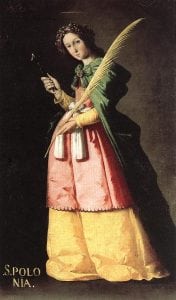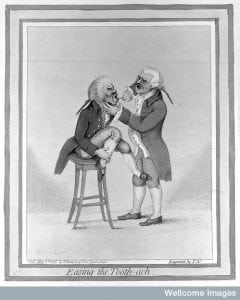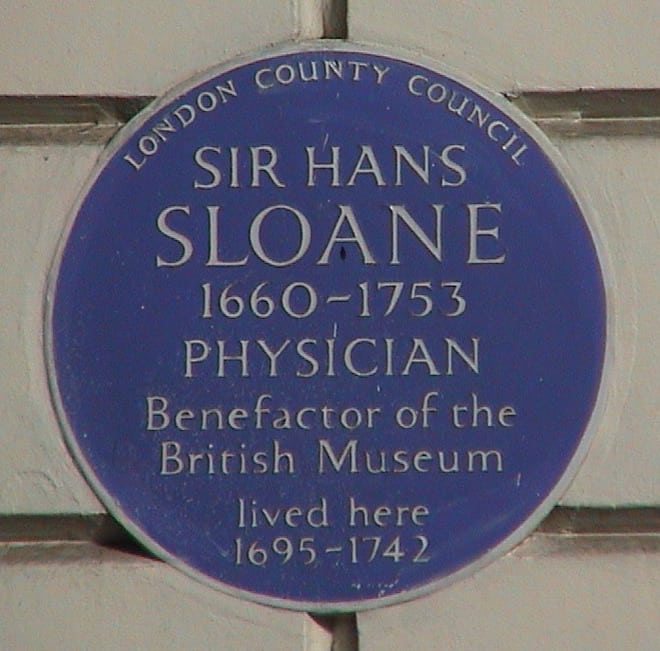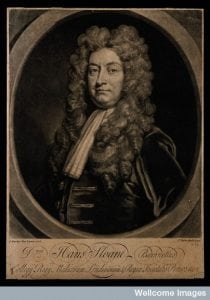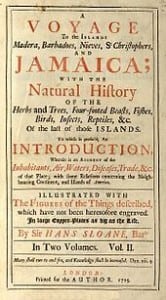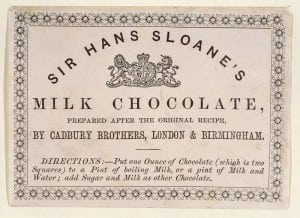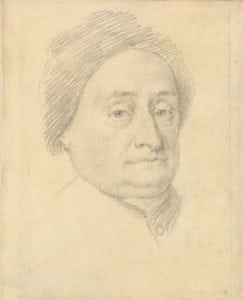Henry Barham Sr. to Hans Sloane – November 6, 1717
Item info
Date: November 6, 1717 Author: Henry Barham Sr. Recipient: Hans SloaneLibrary: British Library, London Manuscript: Sloane MS 4045 Folio: ff. 58-61
-
Language
English
-
Library
British Library, London
-
Categories
Scientific, Social
-
Subjects
Experiments, Jamaica, Meeting, Mineral Waters, Natural History
-
Date (as written)
November 6, 1717
-
Standardised date
-
Origin (as written)
-
Others mentioned
Dr Hay Mr Thomas
-
Patients mentioned
Original Page

Transcription
[fol. 58] Worthy Sr I formerly takeing the Freedom to write to you whilest I was in Jamaica of the Great use advantage and Benefitt that Island might Receive by the Natural History you writ of ye Herbs and Trees there Growing, if they would but make a rite use of that so Laborious Learned and Intelligable Volum, where every Plant is so Exactly Laid down that with only by Reading your Descriptions and having a Recourdr or View on Your Icons, I was a lone able to Distinguish one Plant from Another, and Soon became Familiarly Acquainted with the Tribes of every kind; and as I Signifyed to you that I had made it my Bussiness to finde out the Specifick Quality of some those Plants you there Mention, which undertakeing you were Pleased to Incourage by a Letter you Favoured me with Made me the more Inquisitive and Diligent into the search not only of Plants, but also of What ever fell in my Way that I thoughtt might be of use or Service to the Island and Satisfaction to yourself as farr as my mean Capacity Could Contribute not forgetting that Saying: Semper officio fungitor (says Cicero) Utilitati Hominum consulons et Societati, and Hippocrates the Prince of Physitians sayeth, No cunctoris otiam ab Sidiotis Inquirare et Disedre [?] Siquid ad Modend: Occaso=onem facr Vidatur, and as I am Willing to take Notice of these things that first Appear or are Mentioned in your first Volum Intending (as this is Received to go on Gradually with every thing that may be of use by Way of Letters: And therefore first takeing Notice in your Introduction Page 11the where you Spake of A Hot Bath of Spring Near Morant in the Eastward Part of the Island Situated in A Wood, which has been Bathed in and Drunk of late yours for the Belly ach with great success And should I Enu=merate the Great and Wonderfull Cures that have been effectually performed by Drinking and Bathing in this Wonderful Medecinal Water a Large Volum would not Contain them, and was it not for the ill situation of the Place and Great Difficulty to come at it I Question not but as many more Cures might be performd by it as hath been Already: This Water Gushes out of an Almost Perpendic=ular Rock of A very Great Height not farr from a Place Called Plant=in Garden River opposite is Another Rocky mountain with a little Riverlet between wch is very stony, so that it makes the way that leads to it for 3 or 4 miles very Difficult to Travell in it: Persons being Obliged to goe for the most Part in the River only Now and then A path Dugg out of ye Sides of the mountains wch are so Near to each Other and So High that you Seldom see ye Suns brightness until Near a Eleven or Twelve A Clock; This Hot Water Discharges its self through Three Several Places of ye Rocks like Spouts and are of Different degress of Heat The Upper and Farther most up the River is the Hotest the Next to it not quite so Hot: The Lowest or Hithermost something Cooler, But the Coldest of three farr Exceeds in Heat any of out English Hot Baths for Noo Person dare Attempt to Bathe in ye Coldest of these Waters until it hath been put in A Tub the Best part of an Hour, and if Carried 10 or 12 miles from ye Place it is taken from will be sufficiently Hot to Bathe in, Now to Account for this Uncommon Heat in this Water, is no Small Task especially by me who hath but a small Share in ye knowledg of the Secret and Hidden mysteries of Nature Some are of the Opinion that there is there or Near to that Place a subterraneous Fire or A Vulcano and the Rather because its Observd that all our Shocks or Earthquakes comes first from that Way and always running swiftly to the Westward some are of the Opinion that there is A Rich Mine Near unto it because fine Glittering Marcasites are found Near it (of wch I have brought some over with me) The moss that Grows Upon ye Rocks N[ear and] round about these Hot Water Spouts or Courses are Coverd with Sulphurous Matter to that degree that Card matches have been made of it (as I have been informd) I know a Gentlewoman that had A most Obstinate inveterate Vecor [?] and Her Legg w[as] not be Cured any Way or means until she went to the B[ath] where by Drinking and Constantly Bathing ye Part and Laying in some of the Sulphurated moss was in A most Wonderfull manner firmly and quickly Cured: It was no Small Wonder to me Hearing of so many Eminent Cures Performed by this Hot Water (especially in ye Loss of the use of Limbs Occasioned by Bilious Policks [?] and Restoring those that had wholly Lost their Appetites and emaciated to meer skeletons so strangely Recovered;) And no body Inquier into the Nature and Quality of so eminent a Thermetical Water or in A Chymical Manner Inquier what Salts or Sulphur and in What quantity of either might be found in it: And I having formerly made some Essays Upon A Medecinal Cold Water at St Faiths in ye Parish of St Johns of Guanaboo (wch I shall give an Account of Here after) Thought it would be a means to sett Some Other Persons att Work About this Hot Water to Windward Knowing that there was many Ingenious and well qualifyed Persons frequented that place and fitt for such an Inquiery: Noo attempts being made of that kinde I was persuaded to make some Tryalls for the Publick Benefitt and Satisfaction of some Perticular Persons that frequently made use of that Water, wch I Never yet Published being made Just before I Left that Island: And Now Worthy Sr. if it be worth your Acceptance I shall entertain you with an Exact Diara [sic] of my Several Ways and Manner I Essayed the Above aid Water which when summed up you will be a Better Judge of its Nature and quality than I Can pretend to: Feb: 7th 1716 Upon first View of this Water I Could not Desern any Different Colour from any Other I Observed it had A strange and uncommon Sulphurous smell I Put some of it into a Silver Tankard and in A Few Hours it turned the Silver of A Copperous Colour and ye Upper part Near the sur.. [fol. 59] Surface Of the Water the Sides of the Tankard as Turned of A Blackish Blew Colour and very Thick: 8th I Nicely Weighed the Bath Water with that of Rio de Cobra and Could not find A grain Different in Weight of one from ye Other 9th I Infused in it Cold wch did not give Neither Black or Purple Colour Altho it stood 24 Hours 10th I Put some of this Water into 3 small Glasses into the one Oil of Tartar per Delqh: [?] into Another Rectifyed Oil of Vitriol and into a Third Sal Armoniac Neither of which made any Vizable Alteration or Precepitation 11th I filled 2 small Glasses of this Water and put into one Danzick Vitriol and in the Other English White Vitriol this Changed ye Water to an Amber Colour but Noo precepitation the Other Vitriol made little or no Alteration 12th I made the Water Just Boil and then Infusd Galls in it but noo Alteration in Colour appeard so that I Concluded that is in no Respect Ferruginous [?] 13th I Tried if Distilled Vinegar would make A precipitation but None Appeard 14 I Tried it With Soap and found it made A Stronger and A most Lasting Lather than any Lixivual of Ashes what Leands [?] 15th I made 3 Strong Tinctures in Common Water of Brasilloto [?] Red Saunders and A Red Dying Root that Grows in Jamaica I Dropt into each of These Tinctures some of ye Bath Water which Increased and Heightened their Ruby Complextion 16 I made an Infusion of Lign: Nephriticum in Common Water Another Infusion or Tincture of Jamaica blew berries Called by Some Indigo berries to wch I added Bath Water wch immediately Heightened to a great Degree their Sky or Azure Colour, after which I Dropt in A few Drops of Sp: of Sal Armon: and into ye Other Sp: of Vitrial tho one was Turned into A del:icate Green the Other into a Bright Red 17 I began to Evaporat over A Gentle fire some of ye Bath Water in wch I could not finde Any Sulphuring or precepitated Matter 20th I filled A Small Cucurbit about Half full of the Bath Water (which Smelled very Strong) and Luted A Glass Lembeck Head to it and A Glass Receiver and began to Drane it over the Helm very Gently for 3 Days together I Observed the Water that came over into ye Receiver had no smell; which I Lett Stand Close Stopt: for A Week in which time there Appeared fine Clouds like fine White flecks, some sticking to ye sides of the Glass like Snow Some Waveing About like white Feathers some of which would Rise within an Inch of ye Surface of ye Water, Other Subsideing Almost to the bottom of ye Glass but very litely, for upon ye least motion of the glass they would rise almost to the middle Region of ye Water but Some Clouds stuck fast to the sides of the Glass waveing about like Feathers and would not precepitate to ye bottom; March; I began to make Tryals of the Water Drawn Over into the Receivers by pouring some off it into 4 Glasses into the first I put in Rectifyed oil of Vitriol into A 2d Spirit of Salt into A 3d Butter of Antimony into the 4th Strong Vipegar [?] The first had no Vizable precepitation The 2d had A Small white precepitation like Common Salt in fine Grains The 3d had A very Copious precepitation like Antimon: Diapto: The 4th had no precepitation 9th I poured some of ye Distilled Water into 3 Small Glasses into ye first I put Sp: Sal: Armon: into ye 2d Sp:ll and into ye 3d Ole [?] Tartar per delg. in Neither of which I could not perceive any Alteration of precepitation 11 I made A Strong Solution of drie [?] Sublimat in Common Water, into which I put in Some of ye Distilled Bath Water wch made no Vizable Alteration or precepitation as might be Expected had there been Any Adsonicall [?] Sulphurous quality to it. 12 I put into 2 little Glasses Some of ye Distilled Water into wch I put into one Solution of Danzwick Vitriol and into ye Other Roman Vitriol the first had A yellowish precepitation, the Other Turned a little Greenish with it Whitish yellow precepitate 13th I Put in Three Pints of the Bath Water into A Glass Cucurbit Lakeing [?] very Close it Lembick Head and Receiver and Distilled it or Drew it all off to A Dryness, There Remain [fol. 60] There Remaining in the bottom of the Cucurbit A Small Caput Mors: I broke ye vessel and Scraped it Clean off, wch was of a lite Brown Colour Weighing 24 grains and very Pungent Upon the Tongue I put it Upon A Red Hot Iron wch made a little Smoak Turning Black like Other Minerals or Crude Antimony I held A bright peece of Iron over the Smoak wch Turned ye Iron of a Blewish Colour Some part of it of A yellowish Golden Colour After this I put it Upon a Broad pointed Knife very bright and Held it over the Flame of A Candle until the Knife was of A Sulphurous Smell, but no flame, What Remained Upon the Knife was of A Whitesh Gray in Grains Weighing 10 Grains and Divested of all Manner of ill or Sulphurous Smell Rather Aromatick as the Ingenious and Worthy Dr Hay was Pleased to Call it who was Well Pleased with my Pains and Labour I had taken and Upon tasteing out found it Reddily Dissolved Upon the Tongue with a quick and Smart Pungenty Those were the Tryalls I made Upon this so usefull a Water and had made many more had I not been prevented by my comeing to Great Britain: The Cold Water at St Faiths I Shall give you an Account if Desired; Here after and then shall proceed to the Specifick Qualitys of Some of those Plants Growing in Jamaica not forgetting the Black Spider of which I have brought over with me Mentioned in A former Letter of mine in the mean While I shall Always Remain your most Faithfull friend and Obedient Servant to Command Henry Barham November 6th 1717 I understanding you would be at Crane Court to morrow Left this Letter with Mr Thomas for you
Henry Barham (1670?-1726) was a botanist. He lived in Jamaica and corresponded with Sloane on the plant and animal life of the island. Parts of Barham’s letters to Sloane appeared in the latter’s Natural History of Jamaica (T. F. Henderson, Barham, Henry (1670?1726), rev. Anita McConnell, Oxford Dictionary of National Biography, Oxford University Press, 2004 [http://www.oxforddnb.com/view/article/1374, accessed 13 June 2011]).
Patient Details
-
Patient info
Name: N/A
Gender:
Age: -
Description
-
Diagnosis
-
Treatment
Previous Treatment:
Ongoing Treatment:
Response: -
More information
-
Medical problem reference
